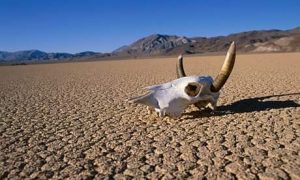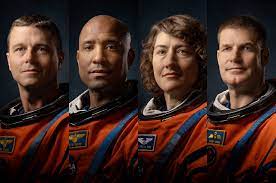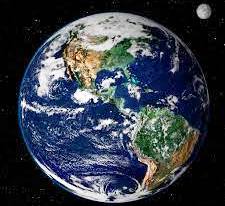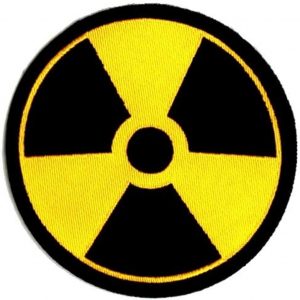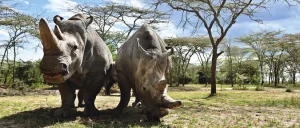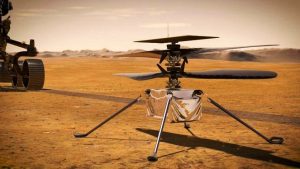There have been arguments over the possibility of some traditional and religious beliefs which have come to be generally accepted.
One of them is that of a virgin birth and that Jesus could be born by Virgin Mary as in the Bible.
With that still on, Pope Pius IX decreed the Immaculate Conception a dogma in 1854, that is, that the birth of Virgin Mary (not Jesus) was not from original sin.
December 8 every year is the feast of Immaculate Conception. The Annunciation, or Virgin Mary conceiving, is on 25 March.
The fact that these were considered impossible may be because it was thought that the laws of Biology do not allow them.
Such may be understood because, as the account went, the Virgin Mary also wondered on the possibility of her having a baby, since she did not have a husband.
She, however, accepted it by faith (Luke 1:38).
In Biology, reproduction can be Sexual or Asexual.
Another name for asexual reproduction is Cloning.
In sexual reproduction, there is usually (but not always) a contact between the male and female sex organs. This is followed by fertilization which is a union of the male and female sex cells or gametes.
In flowering plants, the transfer of pollen from the anther to the stigma (or pollination) is like that contact of sex organs in higher animals before fertilization.

Fertilisation in flowering plants, which comes after pollination, is the union of the pollen with the ovule in the ovary.
In higher animals, mating or copulation establishes that contact before the union of (the male gamete or sex cell) the spermatozoa with (the female sex cell) the egg or ovum.
All living things, no matter their ultimate size, started as a single cell.
Cells are the basic units of life.
In cells, other than sex cells, called Somatic cells, each cell multiplies by dividing into two daughter cells.
They, then, grow and divide independently again and so on.
This process is called Mitosis.

However, in the making of sex cells, like the ovum (egg) and the sperm, there is halving of the genetic materials in the two daughter cells which then, divide again as in mitosis to form four cells to complete the process.
This process of multiplication in sex cells is called Meiosis.
In Mitosis, two daughter cells that have the same genetic contents as the initial cell complete the process, but in Meiosis, four daughter cells having only half the genetic component of the somatic cell of that organism, complete the process.
The genetic materials are in genes made up of strands of Deoxyribonucleic Acids, DNA.
Genes are inside the Chromosomes which are bigger strands.
Each living thing has a unique chromosome number.
In human beings this is 46 or 23 pairs, since chromosomes usually occur in pairs. They consist of 44 autosomes, or chromosomes not responsible for sex, and two sex chromosomes denoted by X, Y.
In mitosis, the two daughter cells have the same diploid number, or chromosome number, as their parent cell (46 in human). This is made up of 44 autosomes and XX (for female) or XY (for male) sex chromosomes.
However, in meiosis, the four daughter cells have the haploid number or 23 chromosomes each in human beings, consisting of 22 autosomes and one X or Y sex chromosome.
It is this haploid number from the male that unites with that from the female to restore the diploid number during fertilization.
The whole aim of mating, therefore, is not to bring about the meeting of sex organs, but to bring about the union of gametes or sex cells in fertilization.
Once the sex cells unite, the reproduction mode is sexual.

In sexual reproduction in some animals, fertilization can be accomplished without mating.
In some toads, for instance, the male mounts the back of the female as she lays eggs in stagnant water.
The male sheds spermatozoa over the eggs in water, and with the hind legs disperse the spermatozoa to ensure they get in contact with as many eggs as possible.
The genital organs of the male and female toads do not touch in the entire process, and the reproduction mode is still sexual.
In many species of fish, the male sheds spermatozoa over the eggs laid by the female in stagnant or shallow water, and they disperse them with their tails and fins to ensure better contact with the eggs and a good level of fertilization.
Their external genitalia do not touch.
However, with animals living on land, their spermatozoa will dry and fertilisation cannot be achieved this way.
The environment, therefore, necessitates a contact between their genital organs to ensure fertilization and survival of the species.
This is taken farther with artificial insemination as practised with farm animals to upgrade them.
The spermatozoa are collected from say, a champion bull, frozen, and thawed later and used to fertilize cows without physically moving the bull.
This is still sexual reproduction.
In the Test Tube baby, the ovum is brought out and fertilized with sperm cell (obtained from the potential father) outside the body in a “test tube,” and then placed in the womb of the mother to be.
The egg, after fertilization, can be planted in the donour’s womb or that of a surrogate mother.
The first test-tube baby, Louise Brown, was born on July 25, 1978.
This, as a feat, was accomplished by Dr Patrick Steptoe and Dr Robert Edwards in Britain.
Since then, several test-tube babies have been born all over the world.
It is particularly helpful for men who would have been sterile because their sperm cells have a head and nucleus, but no tail and cannot swim. It is also useful for women with ovaries but no Fallopian tube for the eggs in the ovary to get to the womb or uterus.
However, the technique of higher animal cloning is completely different.
An egg is brought out and denucleated, or have its nucleus removed.
A cell is made-up of the nucleus, where the genetic materials reside, and watery cytoplasm which contains other small organs called organelles, all wrapped-up in a cell membrane (in animals) or cell wall (in plants).
Remember, eggs/sperm cells have the haploid number.
Then a somatic cell (which has the diploid number) is removed from the potential parent (usually in mammals by scrapping-off cells from inside the cheeks).
The nucleus of this somatic cell is then removed and planted into the denucleated egg, which now has the diploid number, as if it is fertilized.
All this is done using fine instruments in micro-surgery.
The egg is then jump-started to start dividing by passing a small voltage through it, before being implanted into a ready womb.
In a cloned baby, all the genetic material comes from a single donour or parent. The mother can be that parent, or else she is a surrogate.
One will note that in cloning, the nucleus with haploid number in the egg was removed and a nucleus from a cell with the diploid number introduced to restore the chromosome number as in fertilisation.
Otherwise, the chromosome number, if its human, would have been 46 + 23, giving rise to a monster.
Cloning of higher animals is a form of reproduction, but it is not sexual.
It is asexual because there is no union of the male and female sex cells.
Human cloning, though an easy possibility, is being discouraged by legislation for fear that the procedure can be abused by man in the so-called designer babies.
Since the structure of the DNA was revealed by Watson and Crick in 1953, scientists have been sequencing and mapping the human genome, the full set of genetic information that a baby can inherit from its parents.
With so much knowledge about DNA now, the designer baby is a real temptation.
This will be it, after the mad rush to pre-determine sex of babies: In a bid to get more hair on the head, what if hairs also develop on the palms and soles of the feet?
Or, what use is a pointed noise if it cannot breathe or smell things?
The first cloned mammal was Dolly the Sheep, lambed on July 5, 1996 in Roslin Institute in Scotland.
The research was by Dr Ian Wilmut.

Man has successfully cloned rats, rabbits, pigs and cattle in addition to Dolly.
Cloned animals sometimes, have weak organs like lungs, liver, kidney.
These are some of the ethical considerations used to discourage scientists from undertaking human cloning.
In some countries, the laws are being relaxed so that human cloning can be used to produce embryonic stem cells for therapeutic medicine.
The cells, as they divide in a fertilized egg, reach a stage where they start specializing to form organs like liver, kidney, heart etc.
These specialized cells are called stem cells.
The relevant stem cells can be introduced into the heart of a patient with cardiac problem to multiply and produce a new heart in the patient, for example.
The Church and some people are opposed to it because life starts at conception. A foetus whose heart is harvested before it develops fully has been killed to save another human being.
While cloning is novel in higher animals, it has been common in plants and lower animals.
Amoeba, a unicellular animal, for instance, multiplies by binary fission or mitosis, or simple cell division.
Many plants are propagated by cloning: Cassava can be multiplied by planting the stem and several plants can be multiplied by grafting, budding, and layering.
We have gone through the entire processes of cloning to show that the laws of science allow it in man.
There may be other methods than the one discussed that are allowed by the laws of biology, but are not yet fully understood.
For instance, scientists in US and Germany are working hard to save the northern white rhino using bio-engineering.
There are only two northern white rhinos in the world by 2024 and both are female. The last male died in 2018.
Scientists hope to induce skin samples from northern white rhinos to become stem cells. Later on, they can generate germ cells from some of them to have sex cells like the spermatozoa and eggs.
The sex cells, it is hoped, can be fertilised in a test tube and implanted into a surrogate (like the southern white rhino) to save the northern white rhino.
Scientists in the BioRescue Project published in the Science Advances journal of December, 2022 that they have successfully produced primordial germ cells from (induced pluripotent) stem cells from the northern white rhino.
Scientists in Max Delbruck Centre in Berlin, Germany, also reported a feat with the skin tissue of the Sumatran rhino which they used to produce germ cells.
Primordial germ cells are embryonic precursors of eggs and sperm. They still have the full genetic complement and need to divide further to halve this to yield the egg and sperm cells.
This has been achieved before in lower mammals and fertilised before being implanted in surrogates to yield healthy offsprings.
A recent success is that of Professor Katsuhiro Hayashi and his team in Osaka University in Japan who reported in Nature journal in March, 2023, that they used skin tissues from two male mice to produce eggs and sperms which they fertilised and implanted into a surrogate mouse to obtain healthy pups.
This work is significant because they re-programmed the stem cells from a male mouse to lose the Y chromosome and added another X chromosome to have a mouse egg.
The oocytes or eggs produced are immature so, they reconstructed the environment in a mouse ovary to house the oocytes till maturity before they were fertilised.
Using this method by man in achieving the same feat in the northern white rhino is one step closer.
If man can achieve asexual reproduction in higher animals by cloning, why should he think, even by his own standard, that a virgin birth is impossible in human beings? This should no longer be the question.
Already, at least two claims of human cloning by scientists have been made. Details were not given by the claimants to avoid prosecution.
There is no shortage of people who may want a cloned baby, because they have failed using other methods.
There are also those who may just want designer babies using human cloning.
SOME RELIGIOUS HISTORY
Christology or the doctrine of the person of Jesus Christ had not been without problem.
Some persons felt Christ was created, or that a virgin birth was impossible.
This took the first Council of the Church in Nicaea in 325 A.D. to add to the Creed: “Jesus is one in substance with the Father and not created.”
Arius, born 256 A.D. in Egypt, and a parish priest in Alexandria, had argued that Christ was created and did not exist before the creation.
Soon, his teaching started spreading and Alexander the Bishop there, called a synod of bishops.
Eighty of the 100 bishops voted to condemn Arius and exile him. Arius fled to Palestine and continued his teaching.
Emperor Constantine of Rome invoked that Nicaea Council in 325 A.D. to resolve the problem Arian heresy was causing.
Arius was among those invited. The Council produced a creed which Arius and two bishops, sympathetic to him, refused to accept. They were exiled.
It took another Church Council in Constantinople in 381 A.D. to resolve that the Holy Spirit was not created by the Son, by adding to the Creed, “Proceeding from the Father,” for the Holy Spirit.
The Constantinople Council was not fully attended, especially by the Western countries, but was accepted.
Yet, another Church Council in Chalcedon in 451 A.D. resolved that Christ had two natures: one as God and the other as man.
So, even though Christ was holy, he was fully man.
The position of the Holy Spirit re-echoed in the Council of Toledo in 589 A.D. and the Filioque was added to the Nicene Creed: “I believe in the Holy spirit who proceeds from the Father and the Son.”
The Creed as it is today reads:
“I believe in one God, the Father Almighty, maker of heaven and earth, and all that is seen and unseen. I believe in one Lord, Jesus Christ, the only Son of God, eternally begotten of the Father, God from God, Light from Light, true God from true God, begotten, not made, of one Being with the Father, through him all things were made. For us men and for our salvation he came down from heaven: by the power of the Holy Spirit He became incarnate of the Virgin Mary, and was made man. For our sake he was crucified under Pontius Pilate; he suffered death and was buried. On the third day he rose again in accordance with the scriptures; he ascended into heaven and is seated at the right hand of the Father. He will come again in glory to judge the living and the dead, and his Kingdom will have no end. I believe in the Holy Spirit, the Lord, the giver of life, who proceeds from the Father and the Son. With the Father and the Son he is worshipped and glorified. He has spoken through the prophets. I believe in one holy Catholic and apostolic church. I acknowledge one baptism for the forgiveness of sins. I look forward for the resurrection of the dead, and the life of the world to come. Amen.”
It was not easy, but the philosophers of the Church feel that they have done a lot to drastically curtail, if not put to an end, the doubt over Jesus’ conception and the role of the Holy Spirit as in the Bible.
More so, advances in science now have shown that a virgin birth is not impossible and laws of Biology allowed it from the beginning (and that is what is important to them).
photo credit: libretexts, indiatoday, quizlet, wikipedia
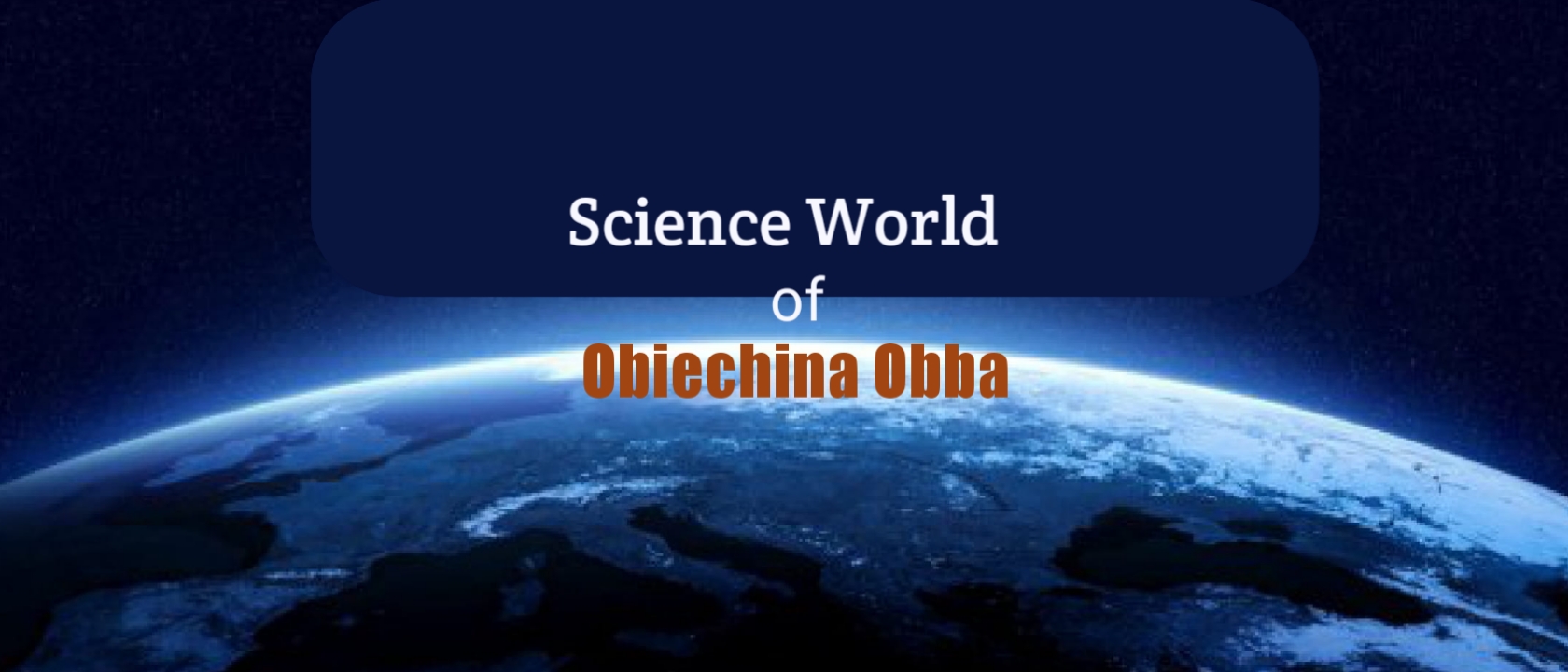
![500+ Dna Pictures [HQ] | Download Free Images on Unsplash](https://media.istockphoto.com/photos/blue-chromosome-dna-and-gradually-glowing-flicker-light-matter-when-picture-id1297146235?b=1&k=20&m=1297146235&s=170667a&w=0&h=vUyHfisjnfzyhzeZvYzt23iaHSEl6UkpoiFctK4BMbc=)
